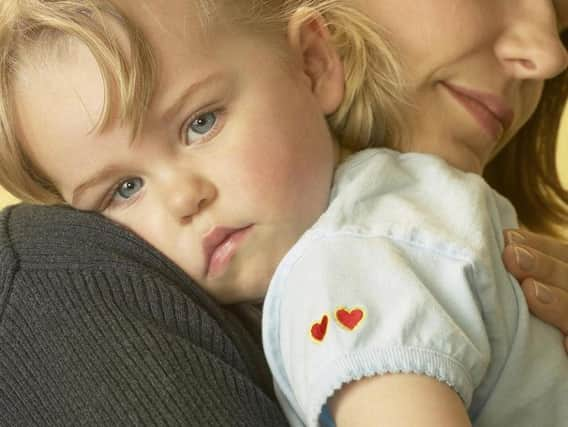Here's how long you should keep your child off school if they have a cold, flu or other diseases


From sniffles and colds to more serious afflictions like chicken pox, schools can be like petri dishes this time of year.
So if your little one is feeling under the weather, here are the government’s guidelines for when you should keep them off school.
Advertisement
Hide AdAdvertisement
Hide AdThe guidelines reveal how long you should keep your children off school for different illnesses.
Here's what they say:
Influenza
Influenza, commonly known as flu, is very infectious and easily spreads in crowded populations and in enclosed spaces.
Flu viruses are always changing so this winter’s flu strains will be slightly different from last winter’s.
Symptoms include headache, fever, cough, sore throat, aching muscles and joints and tiredness.
Advertisement
Hide AdAdvertisement
Hide AdCases are infectious 1 day before to 3 to 5 days after symptoms appear.
Here’s how long to keep your child off: There is no precise exclusion period. Children with symptoms of influenza are advised to remain at home until they have recovered.
Chicken pox (shingles)
Chickenpox is highly infectious and shingles is spread by direct contact with fluid from blisters.
It cannot produce shingles in another person but the virus can spread to those who never had chickenpox from fluid in the blisters of a case.
Advertisement
Hide AdAdvertisement
Hide AdSymptoms include sudden onset with fever, runny nose, cough and a generalised rash.
Here’s how long to keep your child off: Cases of chickenpox are generally infectious from 2 days before the rash appears to 5 days after the onset of rash.
Although the usual exclusion period is 5 days, all lesions should be crusted over before children return to nursery or school.
A person with shingles is infectious to those who have not had chickenpox and should be excluded from school if the rash is weeping and cannot be covered or until the rash is dry and crusted over.
Food poisoning
Advertisement
Hide AdAdvertisement
Hide AdFood poisoning is a general term for gastrointestinal infections caused by consuming contaminated food or drink.
Person to person spread of these infections is unusual.
Symptoms include feeling sick (nausea), vomiting, diarrhoea, stomach cramps and fever.
Here’s how long to keep your child off: Children and adults with diarrhoea should be excluded until 48 hours after the diarrhoea and vomiting has stopped and they are well enough to return.
For some infections, longer periods of exclusion from school are required and there may be a need to obtain microbiological clearance. For these groups your local Health Protection Team will advise.
Advertisement
Hide AdAdvertisement
Hide AdAll outbreaks of food poisoning need to be investigated in order to identify their cause.
Giardia
This parasitic disease is spread from those with the infection to others by the faecal-oral route. It may also be spread by drinking water contaminated with faeces. Infection with giardia may not cause any symptoms. The incubation period is between 5 and 25 days.
When symptoms do occur, they may include abdominal pain, bloating, fatigue and pale, loose stools. Cases need to be treated with antibiotics.
Here’s how long to keep your child off: Children should be excluded until 48 hours after symptoms have stopped.
Salmonella
Advertisement
Hide Ad